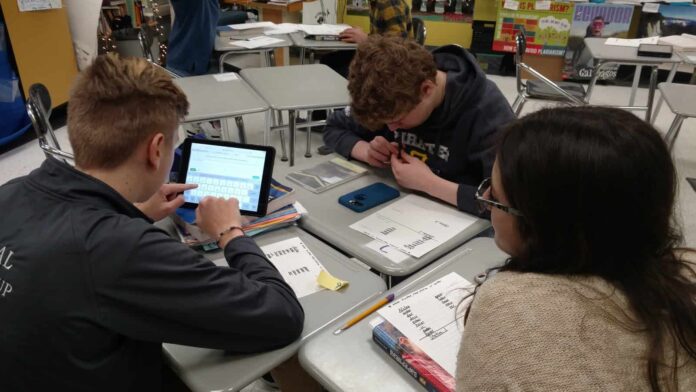Virtual Reality (VR) has emerged as a transformative force in various sectors. But among its applications, the realm of education stands out significantly. Here’s a glimpse into how VR is redefining the traditional boundaries of learning.
Revolutionizing Mathematics Education

One of the subjects that has significantly benefited from VR is mathematics. Traditional teaching methods can sometimes make math seem abstract and challenging to grasp. However, VR-based math games immerse students into a world where numbers and equations become tangible entities. Imagine a game where students can physically manipulate geometric shapes or step into a giant calculator to solve problems.
These games turn mathematical concepts into engaging challenges, promoting critical thinking and problem-solving. Beyond just rote memorization, VR empowers students to visualize, understand, and appreciate the beauty of mathematics in an interactive environment.
Immersive Learning Experiences
Virtual Reality introduces students to an immersive world where abstract concepts come alive. Imagine a history lesson where students can walk alongside Roman soldiers or a science class where they can journey through the human circulatory system. Such experiences make learning engaging, offering students a deep dive into subjects rather than a mere superficial overview.
Tailored Learning Paths

VR allows educators to customize lessons based on individual student needs. A virtual module can adapt in real time, offering more difficult tasks to students who excel and providing additional support for those struggling. This personalized approach ensures every student learns at their own pace and achieves mastery.
Breaking Physical Boundaries
Geography is no longer a constraint with VR. Students can embark on virtual field trips, visiting landmarks, museums, or even space, all without leaving the classroom. This not only saves resources but also ensures that every student gets an opportunity to explore the world beyond textbooks.
Enhancing Collaborative Learning
VR is not just an individual experience; it can be a collaborative one. Platforms allow students from across the globe to work on projects, participate in virtual group discussions, or even enact role-playing scenarios. This fosters a global perspective, encouraging students to understand and appreciate diverse viewpoints.
Addressing Varied Learning Styles

Not every student learns the same way. While some are auditory learners, others may be visual or kinesthetic. Virtual Reality can cater to all these styles. Whether it’s through 3D animations, audio narratives, or interactive tasks, VR ensures that every student’s unique learning style is addressed.
Keeping Pace with Technological Advancements
As the world becomes increasingly digital, the education sector must keep pace. Introducing students to VR not only makes them tech-savvy but also prepares them for future careers that might involve such technologies. They learn adaptability, a skill crucial for the evolving job market.
Final Words
The integration of Virtual Reality in education is more than just a technological fad. It’s a revolution that promises inclusivity, depth, and a global perspective. As we continue to explore and harness the potential of VR, one thing is clear: learning will never be the same again. And that’s truly exciting for educators and students alike.




